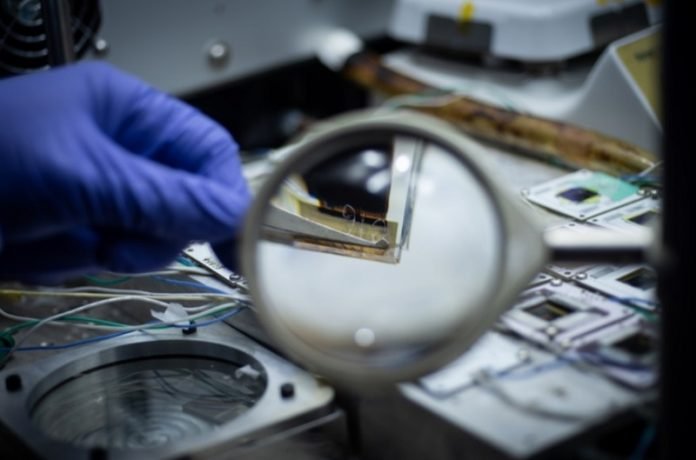
Princeton Engineering researchers have developed the first perovskite solar cell with a commercially viable lifetime, marking a major milestone for an emerging class of renewable energy technology.
The team projects their device can perform above industry standards for around 30 years, far more than the 20 years used as a threshold for viability for solar cells.
The device is not only highly durable, it also meets common efficiency standards.
It is the first of its kind to rival the performance of silicon-based cells, which have dominated the market since their introduction in 1954.
Perovskites are semiconductors with a special crystal structure that makes them well suited for solar cell technology.
They can be manufactured at room temperature, using much less energy than silicon, making them cheaper and more sustainable to produce.
And whereas silicon is stiff and opaque, perovskites can be made flexible and transparent, extending solar power well beyond the iconic panels that populate hillsides and rooftops across America.
But unlike silicon, perovskites are notoriously fragile. Early perovskite solar cells (PSC), created between 2009 and 2012, lasted only minutes.
The projected lifetime of the new device represents a five-fold increase over the previous record, set by a lower efficiency PSC in 2017. (That device operated under continuous illumination at room temperature for one year. The new device would operate for five years under similar lab conditions.)
The Princeton team, led by Lynn Loo, the Theodora D. ’78 and William H. Walton III ’74 Professor in Engineering, revealed their new device and their new method for testing such devices in a paper published in Science.
Loo said the record-setting design has highlighted the durable potential of PSCs, especially as a way to push solar cell technology beyond the limits of silicon.
But she also pointed past the headline result to her team’s new accelerated aging technique as the work’s deeper significance.
“We might have the record today,” she said, “but someone else is going to come along with a better record tomorrow.
The really exciting thing is that we now have a way to test these devices and know how they will perform in the long term.”
Due to perovskites’ well-known frailty, long-term testing hasn’t been much of a concern until now.
But as the devices get better and last longer, testing one design against another will become crucial in rolling out durable, consumer-friendly technologies.
“This paper is likely going to be a prototype for anyone looking to analyze performance at the intersection of efficiency and stability,” said Joseph Berry, a senior fellow at the National Renewable Energy Laboratory who specializes in the physics of solar cells and who was not involved in this study.
“By producing a prototype to study stability, and showing what can be extrapolated [through accelerated testing], it’s doing the work everyone wants to see before we start field testing at scale. It allows you to project in a way that’s really impressive.”
While efficiency has accelerated at a remarkable pace over the past decade, Berry said, the stability of these devices has improved more slowly.
For them to become widespread and rolled out by industry, testing will need to become more sophisticated. That’s where Loo’s accelerated aging process comes in.
“These kinds of tests are going to be increasingly important,” Loo said. “You can make the most efficient solar cells, but it won’t matter if they aren’t stable.”



